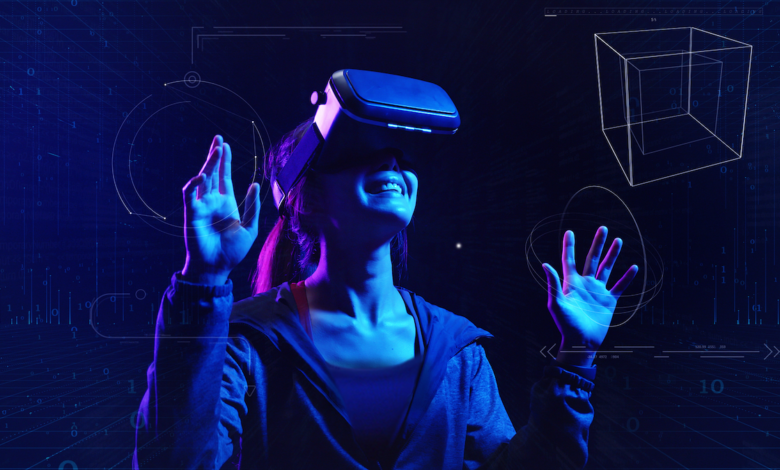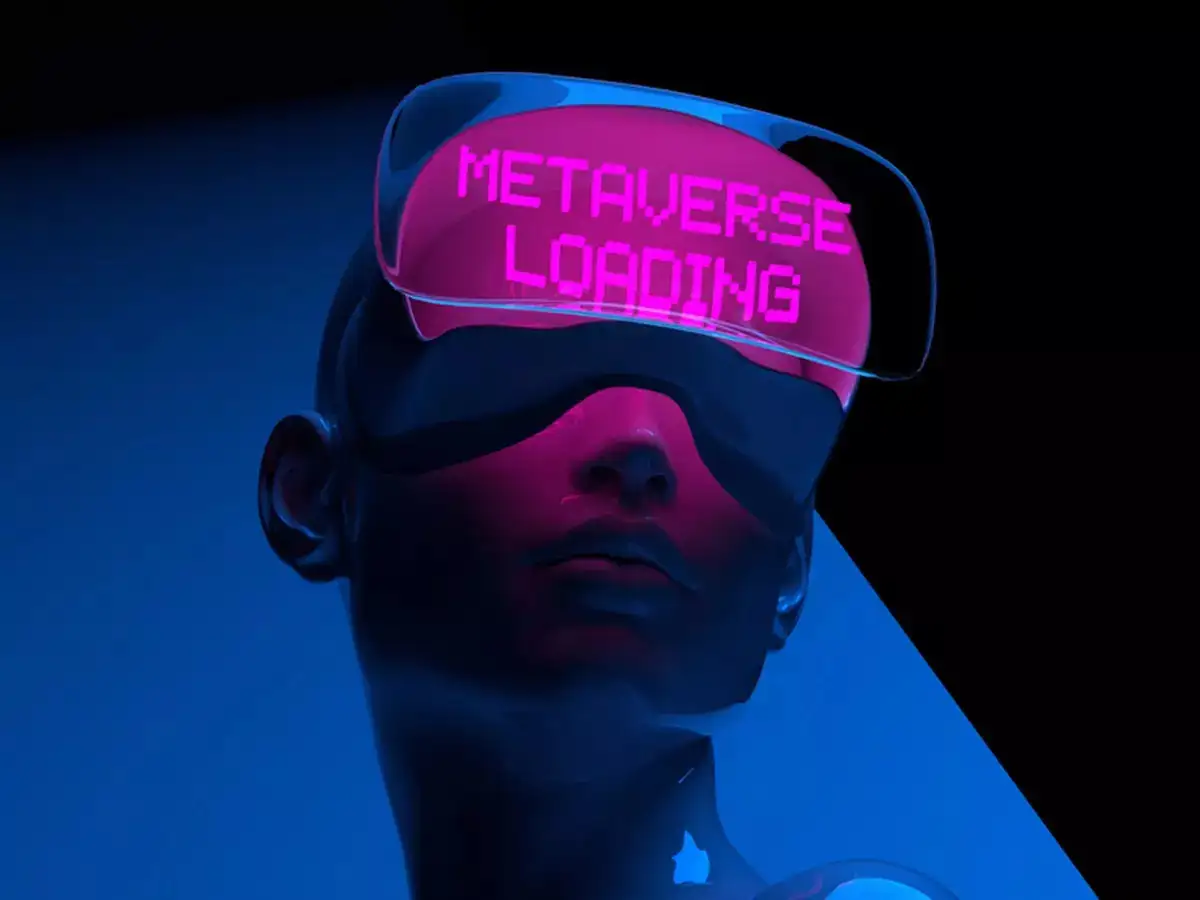The metaverse is a trending and innovative platform for educators worldwide

The metaverse is a trending and innovative platform for educators worldwide
The education system has been merged with a new methodology, a more recent innovation, and technology. Immersive and interactive learning is improving for students, and a variety of tools are helping teachers gain new abilities.
Since they are introduced to technology at an early age, many of the helpful apps on their computers or other gadgets come naturally to them. Children now easily learn using technology as a result. The ease of modern technology has also altered how adults and educators interact with kids. Children now have more play options than just imaginary games. Instead, individuals are exposed to virtual realities and are capable of meaningful interaction with computers and other devices.
With this unheard-of change and transition, Metaverse Education offers a cutting-edge environment for students and teachers. The main goals of modern teaching strategies are to improve student learning and to foster an atmosphere that is both engaging and immersive. One such focus is the Metaverse, an immersive environment where students may engage in enjoyable activities and make studying more exciting. The metaverse platform also promotes peer-to-peer social connections. This change has significant effects on developing skills and learning.
Several important elements that help instructors include:

Engagement and Interactions with Other Peers: Metaverse enables educators and students to connect with peers to discuss concepts, share viewpoints, and gain learning-related advice. Additionally, it enables the communication between teachers and students via video conferences, live chats, and message boards.
- Encourage Participation: The system is ideal for getting students involved in projects, assessments, assignments, and quizzes. The modification of core learning skills is approached holistically.
- Earn Money is a key element that every Metaverse education platform must have. It comes with a range of benefits for all users. It gives teachers the chance to make money while using their expertise in a variety of subjects, including physics, math, and computer languages.
- Simple Accessibility: One of the finest aspects of the Metaverse education learning platform is the fully stocked library of educational materials that makes the information available to instructors and students at any time and from any location. The next possible development driver for the education sector after the evolution of e-learning is AR and VR learning combined with Metaverse in education.
The following are the salient characteristics that have made metaverse education a growing trend:
- Virtual 3-D Classroom: The winner is an immersive 3D platform that brings a distant classroom to life. because it enables instructors and students to work together, communicate, and learn in an engaging setting. It successfully engages distant learners as well as pupils who are physically disabled and visually impaired. Additionally, digital and evaluation tools are incorporated into and constructed into 3D virtual classrooms at universities, colleges, and institutions to aid students in their academic endeavors.
- Simulations of Real-Life Situations: It has been demonstrated time and again that students are more engaged in virtual classroom settings than they are in traditional ones. Since they may safely undertake scientific investigation and experimentation, the real-world scenarios that students can recreate in metaverse worlds are limitless. They can exhibit the project prototypes they have created and experience what it was like to take part in a historical event like World War. Learning will become immersive if students can fully immerse themselves in a 3D simulation of a real-life setting.
- Engaging experience: Research has demonstrated that VR has a favorable effect on students’ learning results, including more motivation and engagement, greater focus, enhanced memory retention, and improved social skills. Students become more focused and have a deeper comprehension thanks to the usage of virtual reality in the classroom. It is also simpler to remember information since VR encourages active learning. In turn, students do better in school.
- When pupils are unable to put their learning into practice, it is no longer considered to be learning. As a result, there is a gap in the learning outcome. Students may put their ideas into practice without any danger in the virtual metaverse classroom, which offers a 3D simulated learning environment. For instance, chemical engineers can experiment risk-free with numerous chemicals. Before the products are launched, they may work on prototypes, saving money, time, and resources. In a similar vein, doctors can continually rehearse their surgical techniques to perfect them.
The education ecosystem’s need gap is being filled by the metaverse. It gives you the exceptional capacity to design individualized learning strategies for each pupil in your class.
A safe and secure setting where kids may communicate with other students, teachers, and individuals from all cultures without worrying about being judged or in danger online. Through the use of immersive study modules, games, and other activities that imitate real-life circumstances, users are now able to learn any topic they choose while making money while still in school.
How might Web3 improve the equity, effectiveness, and personalization of education?

The edtech industry was eagerly anticipated during the epidemic. It caused a welcome upheaval in the nation’s education system, which has long needed change. However, the excitement was brief.
Edtech had difficulties following the epidemic for several reasons. The opportunities it offers are still virtually endless. Indeed, as modern technologies quickly advance, education is going through yet another change.
One of these technologies that have the potential to revolutionize education is Web3, or the decentralized internet. If Web1 and Web2 were both read-only and read-write, respectively, Web3 is both read- and write-accessible.
A key component of Web3 is decentralization. To put it another way, Web 3, which is built on blockchain technology, verifies itself. University systems and K-12 institutions will be rendered obsolete by the Web3 paradigm.
Ravi Chamria, co-founder and CEO of blockchain infra-automation platform Zeeve, claims that decentralized education is a system that is more collaborative, effective, individualized, inclusive, and upholds data privacy.
Not everyone has equal access to education in the modern world. Lack of infrastructure, inadequate money, and exorbitant fees are just a few of the issues preventing more people from accessing education. Another deterrent to teaching is having to do it at a set place and time (as at schools or universities). Because it democratizes access to education, Web3 is particularly important in this context.
Arun Chinnachamy, Chief Technology Officer of edtech firm BrightCHAMPS, described it as “an open platform that can be used for little or no cost, at any time, and from anywhere.”
The dissemination of learning techniques through online education has proven successful using videos and other resources. An outstanding example is YouTube. This change is favorable. It released education from geographical and temporal restrictions. The courses are accessible from anywhere in the world and can be finished at one’s own pace.
However, these systems are centralized as well.
“The completion rate for online courses is typically about 15%.” Furthermore, the curriculum must follow the suggested learning route from traditional education if a student wants to transfer credits to those institutions, according to Chamria.
On the other hand, students using a decentralized approach will have the opportunity to select their individualized learning routes.

Instead of going to colleges, Chamria said, students may join any role-specific DAO (decentralized autonomous organization), such as the developer DAO for learning to code, the metrics DAO for learning blockchain analytics, the vector DAO for learning to design, and so on.
With the help of Web3, students will have access to digital wallets where they may keep credentials from recognized schools, internships, open-source projects, and other things. Even though blockchain will be used to prove proficiency, Chamria claims that students will own their credentials and have access control over them.
The use of more recent technologies, following Chinnachamy, can aid in the expansion of education beyond the traditional brick-and-mortar model. It may enable you to make financial savings on items like textbooks, dress codes, and bags. He claims that the lower tuition fees will make quality education more accessible to students from less privileged backgrounds.
The potential of Web3 and blockchain technology
Blockchain, Web3, and cryptocurrency are permeating our daily lives. In many areas of their business operations, financial institutions, governmental entities, and private companies have either deployed or are preparing to implement blockchain technology. Worldwide, institutional and individual investors are becoming more and more interested in cryptocurrencies. Web2 to Web3 migration has started; the entire migration will take place over time.
Despite the enormous economic and social benefits that these new ideas and technology offer, they are typically seen in isolation. Cryptocurrencies, Web3, and blockchain technology are all intimately related. The importance of crypto assets in the blockchain and Web3 ecosystems must be understood from this perspective, and they must be seen as a “transformative force” in our innovation economy. The importance of cryptocurrencies extends far beyond their status as a brand-new financial class.
The next generation of the internet, known as Web3, is built on blockchain technology. When the earliest internet version, known as Web1, first appeared in the late 1980s, it had just the most fundamental functions, such as information-displayable static web pages.
Users may switch from being able to “just read” to “read and write” with the second version, known as Web2. But the digital behemoths that ran social media platforms and cloud-based services transformed into “data centers” over time, regulating the information that users shared.

Data sharing and collection, ethics, and worries about data privacy and security are a few of the topics that have been the subject of increased discussion and criticism. Technology can deal with any issue. This issue can be solved by the blockchain technology that powers Web3. This new technology is renowned for its decentralized features and is built on an open, distributed ledger in which each block holds irrevocable information to ensure maximum transparency.
It is essential to comprehend that a blockchain relies on incentive-based tokenomics to operate. Decentralized blockchain participants must be motivated to work together to validate network changes. To get bitcoins as “block rewards,” participants in the bitcoin blockchain, for instance, must utilize their computer resources to authenticate transactions. Every public blockchain has a native cryptocurrency of its own that is used to reward participants.
Decentralized banking, digital credentials, and metaverses are just a few examples of the applications that the incentive mechanism enables. It also forms the basis for digital asset provenance. Using encryption and network-wide consensus on blockchains, the origin and transaction history of every unit of a crypto asset can be traced.
The existence of this verifiable chain of titles prevents the value of digital infrastructure from being faked or duplicated. The use of self-executing algorithms based on live data in the form of smart contracts is essential for Web3 solutions, which depend on this certainty. A notary service validating the transfer of property records is one way that this might happen.
Blockchain technology has the potential to enhance public services and identity-based social development strategies in the context of India if properly implemented. While the central government understands how critical it is to advance blockchain technology, the next step is to focus more on the potential applications of cryptocurrency that go beyond the one use case of digital assets. A strong trend that is affecting economies all around the world is cryptocurrency. The sector is convinced that regulators will work together to create rules that will enable our economy to fully benefit from the growth of the global crypto industry.
One of the top five nations when it comes to accepting new digital assets in India. It may gain much more if the government and businesses work together to create a legal framework that would give cryptocurrency credibility while safeguarding the rights of users. Web3 shows greater promise in several sectors, as noted in a recent NASSCOM research titled “The India Web3 Startup Landscape,” but legislative hurdles remain a significant obstacle that will require swift ecosystem action.

As a result, the government must be practical in its attempts to implement and expand blockchain technology to improve public services. Crypto is important to the blockchain and Web3 ecosystems. The trip has started. However, how rapidly we establish a cryptocurrency-friendly ecology will influence the course it takes. The development of the sector requires a more thorough strategy.
Because of cutbacks at huge organizations, IT expertise is moving to Web3.
Many technological businesses are being forced to lay off workers as the inflation rate rises and a recession approaches. To put this in perspective, data from Layoffs. FYI shows that over 700 IT businesses have cut staff internationally, affecting at least 93,519 individuals. The significant personnel layoffs at tech behemoths like Apple, Netflix, and Google have also been publicized.
Although an economic slowdown is probably to blame for many of these layoffs, this has led to an inflow of expertise into early-stage Web3 businesses.
Edited by Prakriti Arora




